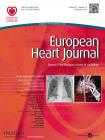Four-dimensional flow magnetic resonance imaging visualizes drastic changes in the blood flow in a patient with chronic thromboembolic pulmonary hypertension after pulmonary thromboendarterectomy
Han QJ, Contijoch F, Forfia PR, Han Y

A 26-year-old female presented to the emergency department due to shortness of breath and was admitted to the hospital after large emboli in the distal branch pulmonary arteries (PAs) were found on contrast-enhanced CT angiogram. At 6 months, catheterization and pulmonary angiogram confirmed chronic thromboembolic pulmonary hypertension. The patient was referred for pulmonary thromboendarterectomy (PTE), which was performed 11 months after the initial diagnosis. The removed pulmonary emboli are shown in Panel A. Cine cardiac MRI and 4D flow imaging were performed 1 month pre-operatively and 4 months post-operatively. The pre-PTE study demonstrated enlarged right ventricle (RV) with septal flattening (Panels B1 and C1). In addition to helical flow observed the PA, there was also a very pronounced helical tricuspid regurgitation (TR) in the right atrium, and a number of small vortices in the RV, as shown in the 4D flow images (Panel D1).
The post-PTE study demonstrated normal sized RV and restoration of the normal septal position (Panels B2 and C2). Pulmonary artery peak velocity increased from 31.8 to 54.7 cm/s, and stroke volume increased from 68 to 81 mL. Drastic changes were seen in the 4D flow as TR jet was no longer present; the RV flow formed larger vortices in the RV and was directed more towards the outflow tract and the vortex in the PA was significantly diminished (Panel D2).
To the best of our knowledge, this is the first record of the helical TR flow pattern, as well as the normalization of PA flow and RV filling flow after successful PTE.
